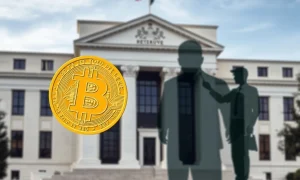For business leaders and forward-thinking investors, understanding the future of global finance is paramount. A bold claim from a prominent figure in the cryptocurrency world suggests that Bitcoin could be the ‘perfect asset’ for the next 1,000 years. This perspective demands attention, particularly as the digital asset continues to challenge traditional financial paradigms and attract significant capital flows. However, this promising future comes with inherent complexities and risks that warrant careful consideration.
Bitcoin: A Thousand-Year Vision for the Perfect Asset
Willy Woo, a respected Bitcoin analyst and early adopter, recently articulated a compelling vision at the Baltic Honeybadger conference in Riga, Latvia. He posited that Bitcoin stands as the ‘perfect asset’ for the next millennium. This declaration, while ambitious, highlights the digital currency’s unique properties, such as its decentralized nature, scarcity, and resistance to inflation.
Despite this immense potential, Woo emphasized a critical prerequisite for Bitcoin to truly fulfill its role: it requires significantly more capital inflow to compete effectively with established global reserve assets. Consider the current landscape:
- Bitcoin’s market capitalization currently hovers around $2.42 trillion.
- Gold, a traditional safe-haven asset, boasts a market cap of approximately $23 trillion.
- The US dollar money supply, a dominant force in global finance, stands at an estimated $21.9 trillion.
Evidently, a substantial gap exists. For Bitcoin to rival the US dollar or gold, it must attract an unprecedented influx of investment. Woo believes that without this scale, even a perfect monetary asset cannot fully achieve its transformative purpose.
Navigating Risks: The Bitcoin Treasury Challenge
Woo identified several significant obstacles preventing Bitcoin from achieving world reserve asset status. One primary concern revolves around the growing trend of companies holding Bitcoin on their balance sheets, often referred to as ‘Bitcoin treasury firms’. While these entities undeniably accelerate adoption, they introduce a layer of risk.
Specifically, Woo expressed apprehension about the opaque nature of their debt structures. He stated, “No one’s really publicly looked deeply into the debt structuring.” This lack of transparency could lead to severe consequences. Weakly structured treasury firms might face collapse, potentially causing substantial financial losses for investors. Furthermore, Woo warned that altcoin treasuries appear to be adopting a similar playbook, which could precipitate another market bubble.
A critical question arises concerning market corrections or bear markets: “What happens to the bear market? Who’s swimming naked and how many coins get slapped back out into the market?” This highlights the potential for forced selling from overleveraged entities, which could amplify market downturns. Therefore, careful scrutiny of corporate Bitcoin holdings is essential for market stability.
Centralization Concerns: Nation-States and Bitcoin Custody
Another significant risk to Bitcoin’s long-term decentralization and resilience stems from its increasing reliance on institutional exposure vehicles. Investors with substantial capital, often termed ‘money bags,’ frequently opt for exposure through spot Bitcoin exchange-traded funds (ETFs) or Bitcoin treasury companies like MicroStrategy. Similarly, pension funds commonly utilize institutional solutions such as Coinbase Custody.
While these on-ramps effectively open the floodgates for more capital into the Bitcoin ecosystem, they concentrate a significant amount of BTC within the reach of large custodians and, by extension, nation-states. Woo warned that this concentration could increase the risk of a government-led ‘rug-pull.’ This scenario implies a potential for state intervention or confiscation if a large portion of Bitcoin is held by centralized entities rather than through individual self-custody.
For instance, if a government decides to exert control over digital assets, large custodians could become points of vulnerability. Consequently, while institutional adoption brings liquidity, it also introduces a new vector for systemic risk. The balance between accessibility and decentralized control remains a critical debate within the Bitcoin community.
The Path to Widespread Bitcoin Adoption: Self-Custody and Corporate Strategy
Despite concerns about centralized custody, the idea of self-custody continues to gain traction. Max Kei, CEO of Debifi, a Bitcoin self-custody platform, believes that self-custody will spread progressively. Initially, large institutional custodians will learn and implement self-custody practices. Subsequently, individuals within these companies will become educated and adopt similar methods. Ultimately, this knowledge and practice will disseminate widely throughout the broader market.
Pictured left to right: Danny Knowles, Leon Wankum, Max Kei, Adam Back and Willy Woo speaking about “What’s Next” for Bitcoin. Source: Hodl Hodl
Interestingly, Blockstream CEO Adam Back offered a nuanced perspective on corporate Bitcoin adoption. While acknowledging Woo’s concerns, Back maintained that companies remain the most logical starting point for broader Bitcoin integration. He suggested using Bitcoin’s expected future returns as a ‘hurdle rate’ for investments. Back famously stated, “If a company can’t beat Bitcoin, they should close up shop and buy Bitcoin.”
Furthermore, Back clarified that companies with strong core businesses do not necessarily need to become ‘pure-play’ Bitcoin companies. Instead, they can thrive by strategically integrating Bitcoin into their operations or balance sheets. This approach allows businesses to leverage Bitcoin’s potential without completely altering their fundamental business model. Therefore, corporate engagement, despite its inherent risks, could serve as a vital catalyst for Bitcoin’s journey towards mainstream adoption.
The Road Ahead for Bitcoin: Balancing Potential and Peril
Ultimately, Willy Woo’s assertion that Bitcoin is the ‘perfect asset’ for the next 1,000 years underscores its profound long-term potential. Nevertheless, its journey to becoming a dominant global monetary asset is fraught with challenges. Attracting sufficient capital flows remains crucial for Bitcoin to compete with the sheer scale of the US dollar and gold.
Moreover, the risks associated with opaque debt structures in Bitcoin treasury firms and the centralization inherent in institutional custody solutions demand careful monitoring. While these avenues accelerate adoption, they also introduce vulnerabilities that could be exploited by market forces or nation-states. Conversely, the gradual spread of self-custody and the strategic integration of Bitcoin by corporations offer promising pathways for its continued growth and resilience. As the digital asset ecosystem matures, navigating these complexities will define Bitcoin’s trajectory in the centuries to come.
Frequently Asked Questions About Bitcoin
Q1: Why does Willy Woo call Bitcoin the ‘perfect asset’ for the next 1,000 years?
A1: Willy Woo believes Bitcoin’s inherent properties, such as its fixed supply, decentralization, and resistance to inflation, make it an ideal store of value and monetary asset for the very long term, potentially for a millennium.
Q2: What are the main obstacles preventing Bitcoin from competing with the US dollar and gold?
A2: The primary obstacles include the need for significantly larger capital flows to match the market capitalization of the US dollar and gold, and the risks associated with opaque debt structuring in corporate Bitcoin treasuries.
Q3: How do institutional investments like spot Bitcoin ETFs pose a risk?
A3: While institutional investments bring capital, they concentrate large amounts of Bitcoin in centralized custodians. This concentration could make Bitcoin more vulnerable to nation-state intervention or a ‘rug-pull’ if governments decide to exert control over these centralized holdings.
Q4: What is ‘self-custody’ in the context of Bitcoin, and why is it important?
A4: Self-custody refers to holding your own Bitcoin private keys, giving you direct control over your funds without relying on a third party like an exchange or custodian. It’s important because it reduces counterparty risk and enhances the censorship resistance inherent to Bitcoin’s design.
Q5: According to Adam Back, why are companies logical starting points for Bitcoin adoption?
A5: Adam Back argues that companies can use Bitcoin’s expected returns as a benchmark for their investments. If a company’s core business cannot outperform Bitcoin, it should consider holding Bitcoin. He believes companies can integrate Bitcoin strategically without becoming pure-play crypto firms, thus accelerating broader adoption.
























